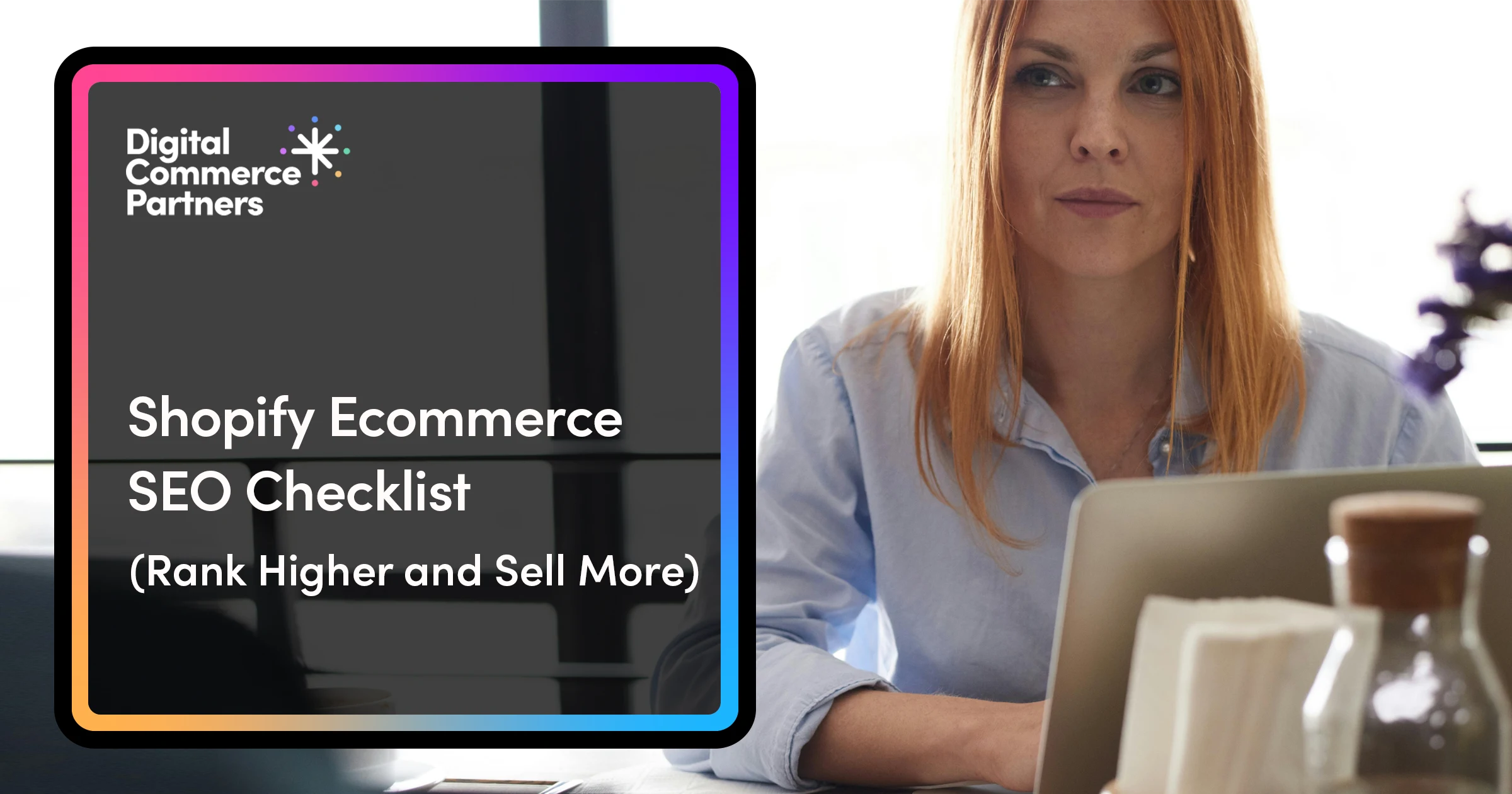SEO isn’t optional—it’s essential for Shopify success in 2025. The ecommerce landscape is more competitive than ever, and search engines remain the top source of organic traffic.
Shopify offers a strong foundation, but true optimization requires more—fine-tuning site speed, structured data, content, and internal links.
As part of our Shopify SEO services, I’ve helped countless clients optimize their Shopify stores for SEO. Over time, I’ve refined the exact process that gets results.
Now, I’m sharing that Shopify ecommerce SEO checklist with you—so you can get your store ranking at the top of the SERPs.
In this article:
Rank higher, sell smarter.
Shopify’s built-in tools are solid, but in competitive markets—where the stakes are high—basic SEO won’t cut it. Our Shopify SEO services focus on the 20% that drives real results.
Preparing Your Shopify Store for SEO
The first part of the Shopify SEO checklist is all about preparation.
Before implementing advanced SEO strategies, it’s essential to establish a strong foundation for your Shopify store. A well-structured site optimized for search engines and users ensures that your pages are indexed correctly and visitors have a seamless experience.
A Shopify store that isn’t properly set up can suffer from slow loading times, poor navigation, and duplicate content issues, negatively impacting rankings and conversions. By preparing your store, you’ll set yourself up for long-term success in organic search.
1. Choose the Right Shopify Theme for SEO
Your Shopify theme plays a crucial role in SEO performance. A well-designed theme enhances site speed, mobile responsiveness, and user experience, all of which are important ranking factors. A theme that’s slow to load or poorly coded can push your store down in search results, frustrating potential customers.
When selecting a theme, prioritize ones that are lightweight and fast-loading. Many free and premium Shopify themes include SEO-friendly features, but it’s important to test them using tools like PageSpeed Insights or GTmetrix.

A mobile-friendly design is also non-negotiable.
Since Google now uses mobile-first indexing, themes must be fully responsive, adjusting seamlessly across different screen sizes. If your site isn’t optimized for mobile users, Google is less likely to rank it highly in search results.
2. Optimize Your Shopify Site Structure for Better Crawlability
A well-structured store makes it easier for search engines to crawl and index pages while improving customer navigation. A confusing or cluttered site structure can lead to high bounce rates, plummeting traffic, lower engagement, and lost sales.
The best practice is to keep things simple and intuitive. Shopify’s default structure typically follows this hierarchy:
- Homepage → Collections → Products
- Homepage → Blog → Articles
Each page should be no more than three clicks away from the homepage. If customers struggle to find what they’re looking for, search engines will, too.
A logical structure helps distribute SEO value across all pages, ensuring that category and product pages benefit from your overall SEO strategy.
Another critical step is internal linking. Linking between related product pages, category pages, and blog content improves crawlability while keeping users engaged longer.
3. Improve Your Shopify Site Speed for Better Rankings
Page speed is one of Google’s most important ranking factors, and a slow-loading store can result in higher bounce rates and fewer conversions. Customers today expect pages to load in two seconds or less—any longer, and they’re likely to leave.
To improve site speed:
- Compress images before uploading them to Shopify using tools like TinyPNG.
- Use lazy loading so images only load when needed.
- Reduce the number of Shopify apps running in the background.
- Enable browser caching to speed up page reloads.
Speed optimization isn’t just about SEO—it directly impacts customer experience. A fast store keeps visitors engaged and increases the likelihood of completing a purchase.
4. Set Up Essential SEO Tools for Shopify
To successfully optimize your Shopify store for SEO, you need the right tools to track performance, monitor rankings, and fix issues. Without these tools, measuring progress or identifying improvement opportunities is difficult.
Google Search Console – Monitor Indexing and Rankings
Google Search Console (GSC) is essential for tracking how Google crawls and indexes your Shopify store. It helps identify ranking keywords, indexing errors, and technical SEO issues that could affect visibility.
To set it up, visit Google Search Console, add your Shopify store’s domain, and submit your XML sitemap (https://yourstore.com/sitemap.xml).
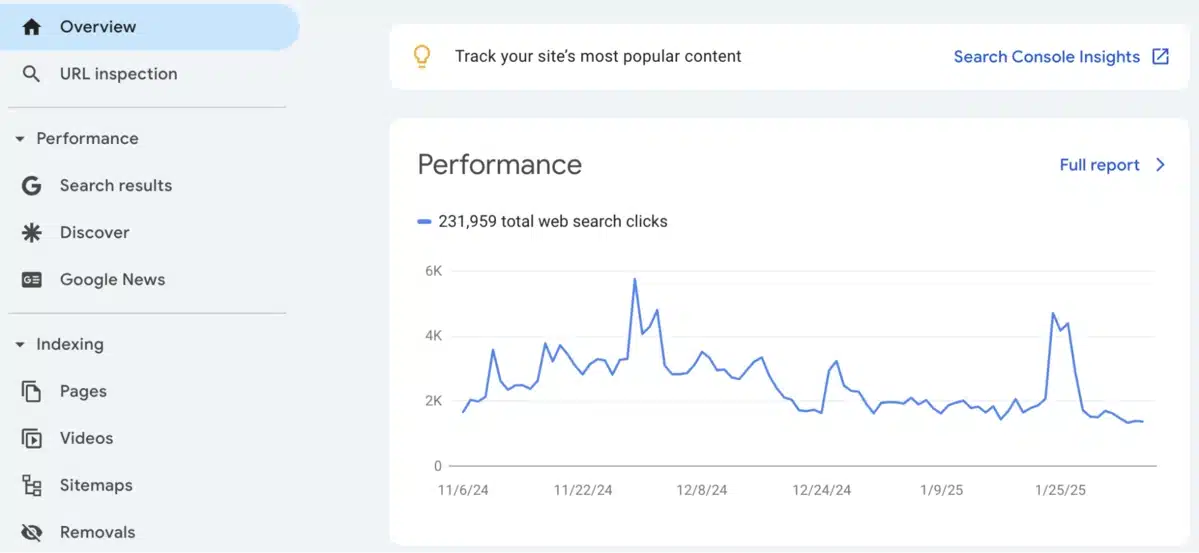
This ensures that all product and collection pages are indexed properly. GSC will also alert you to crawl errors, mobile usability issues, and performance problems, allowing you to fix them before they impact rankings.
Google Analytics 4 – Understanding Traffic and Conversions
Google Analytics 4 (GA4) helps track where your visitors come from, which pages they engage with, and how many convert into customers.
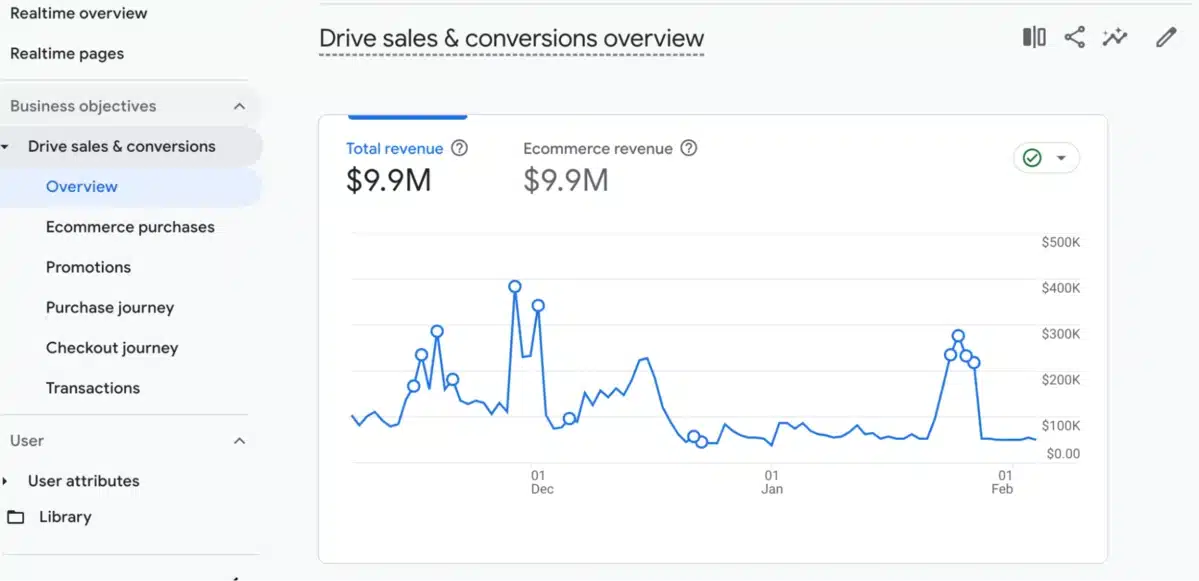
Unlike Search Console, which focuses on search visibility, GA4 provides insights into user behavior, bounce rates, and shopping patterns.
To integrate GA4, copy your GA4 Measurement ID and paste it into Shopify’s Google Analytics settings under Online Store → Preferences.
This will enable user activity tracking and help you refine your SEO strategy based on real data.
Bing Webmaster Tools – Expanding Search Reach
Bing may not be as dominant as Google, but it still drives valuable search traffic. Setting up Bing Webmaster Tools ensures your store is indexed across multiple search engines.
The process is similar to GSC—add your store’s domain, verify ownership, and submit your sitemap.
Shopify SEO Apps – Automating Optimization
Shopify offers SEO apps that automate technical tasks:
- Plug in SEO scans for common issues.
- Smart SEO improves structured data.
- Image Optimizer compresses images for better speed.
While not mandatory, these apps help streamline ongoing SEO maintenance.
5. Review Shopify’s Robots.txt and Sitemap Features
Shopify automatically generates two important SEO files: robots.txt and the XML sitemap. These files help search engines crawl and index your site efficiently, ensuring the right pages appear in search results.
Understanding Robots.txt
The robots.txt file tells search engines which pages to crawl and which to ignore. Shopify’s default settings block unnecessary pages like checkout, cart, and admin sections.
In most cases, no adjustments are needed, but if your store has duplicate content or unnecessary URLs, editing robots.txt can help optimize crawl efficiency.
To modify it, navigate to Online Store → Themes → Edit Code and adjust the robots.txt.liquid file carefully, ensuring you don’t accidentally block important pages.
The Role of Shopify’s XML Sitemap
Your sitemap.xml is a structured list of all important pages—products, collections, blogs, and main pages. Shopify automatically generates this, but you should submit it to Google Search Console (yourstore.com/sitemap.xml) to ensure all pages are indexed properly.
Optimizing Your Sitemap for SEO
To enhance your sitemap, remove low-value pages, ensure key product pages are included, and fix broken links that might affect rankings. A clean, well-structured sitemap improves search engine visibility and helps Google crawl your site efficiently.
Product and Collection Page Optimization
Product and collection pages are the most important pages on your Shopify store, which is why they’re the next part of this SEO checklist for ecommerce sites. If they aren’t optimized properly, your products won’t rank, and potential customers won’t find them.
Today, Google prioritizes user experience, search intent, and structured data, so adding keywords isn’t enough. These pages need to be well-structured, informative, and optimized for conversions.
Here’s how to do it.
1. Write SEO-Friendly Product Titles and Meta Descriptions
Your title tags and meta descriptions are the first things searchers see in Google results. They directly impact click-through rates (CTR), so they must be compelling and keyword-rich.
- Title Tags: When writing ecommerce titles, keep them under 60 characters, include the main keyword, and make them descriptive yet concise.
- Example: “Waterproof Hiking Boots – Lightweight & Durable for Any Terrain”
- Meta Descriptions: Aim for 150-160 characters, use secondary keywords, and include a call to action.
- Example: “Discover the best waterproof hiking boots for outdoor adventures. Shop now for durable, lightweight comfort.”
2. Optimize Product Descriptions for Search Intent
Many Shopify stores copy manufacturer descriptions, but this creates duplicate content issues and doesn’t help SEO. Instead, craft unique, engaging product descriptions that:
- Answer common buyer questions by highlighting key features, benefits, and use cases.
- Include long-tail keywords naturally without keyword stuffing.
- Use bullet points for readability, making important details easy to scan.
- Incorporate storytelling to explain how the product solves a problem.
For example, these Amazon dumbbells have a product description that lacks SEO-friendly details, fails to engage shoppers, and ultimately fails to rank well.
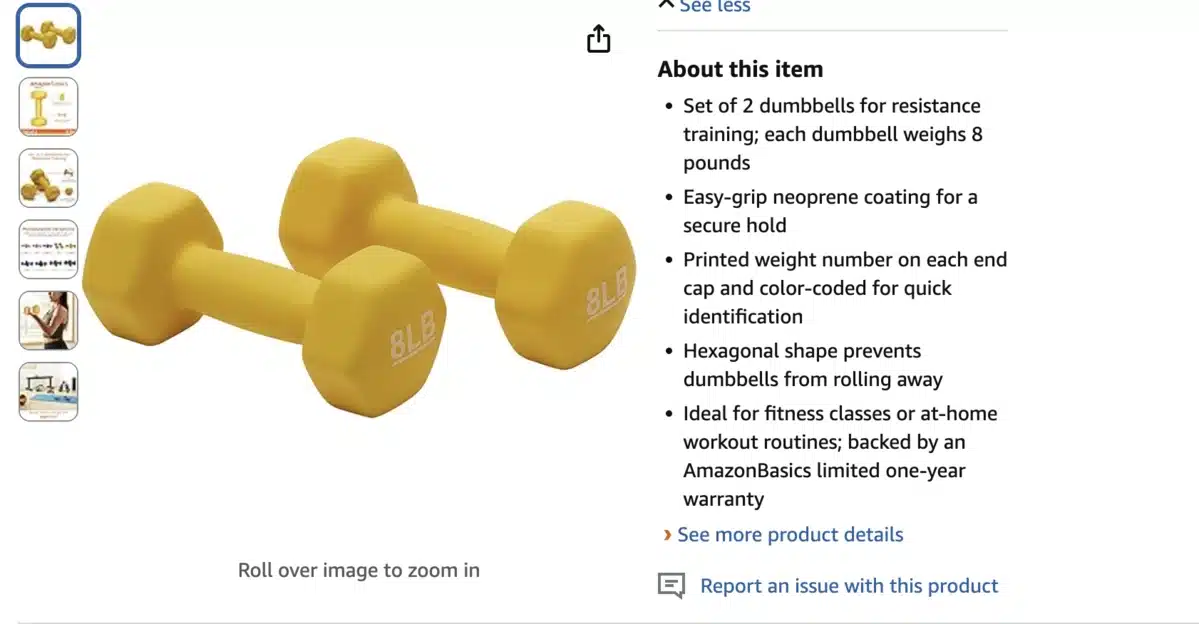
This tent from Coleman, however, is an example of a well-optimized product description that highlights key features, uses relevant keywords naturally, and offers clear benefits—all essential elements for better SEO.
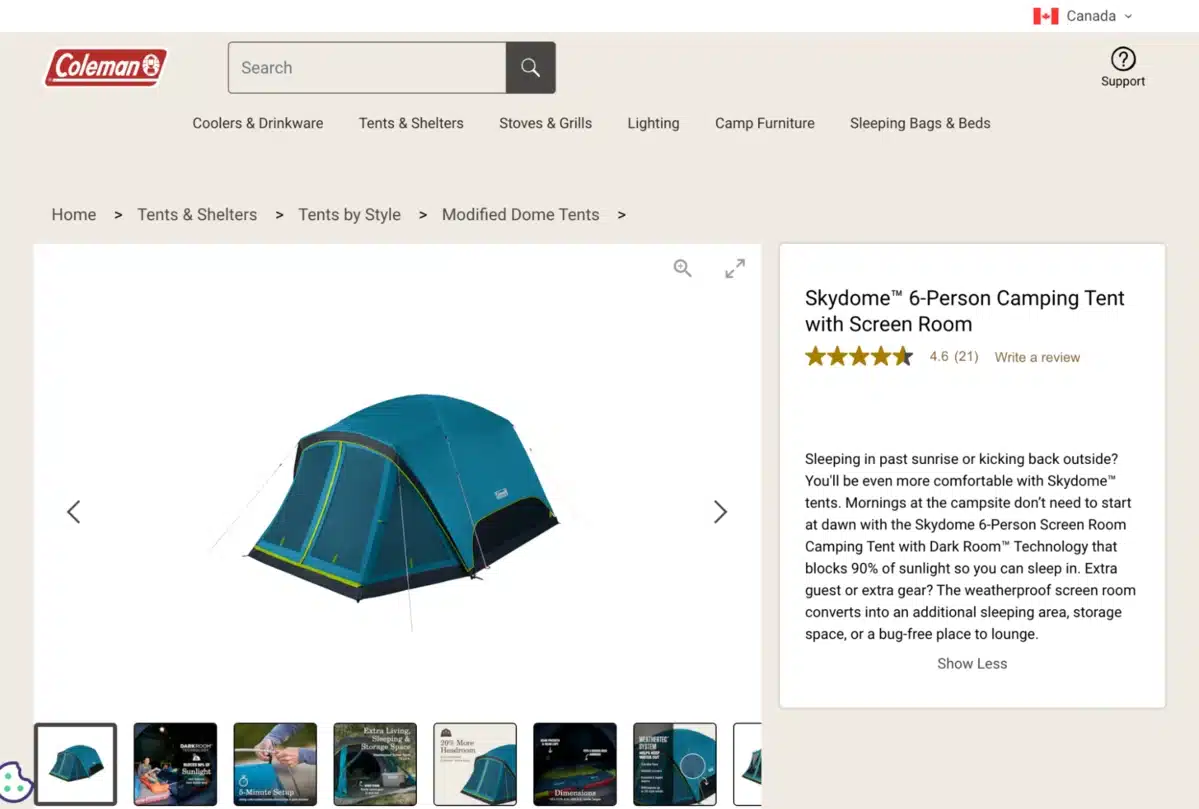
3. Use High-Quality, SEO-Optimized Images
Google ranks image search results separately, so optimizing images increases visibility. Here’s how to do it:
- Use descriptive file names before uploading (e.g., waterproof-hiking-boots.jpg instead of IMG1234.jpg).
- Add keyword-rich alt text to help search engines understand the image.
- Compress images using Shopify’s built-in tools or apps like TinyPNG to maintain fast loading speeds.
4. Structure Collection Pages for SEO
Your collection pages should be designed for both search engines and shoppers. Many Shopify stores neglect these pages, but they’re great opportunities to rank for category-level keywords like “Men’s Running Shoes” or “Organic Skincare Products.”
Best practices for collection pages:
- Include a unique category description with keywords (avoid duplicate text).
- Ensure your H1 heading defines the category (e.g., “Shop Men’s Running Shoes”).
- Add internal links to related collections and best-selling products.
5. Implement Structured Data (Schema Markup)
In search results, Google uses structured data to display rich results, such as star ratings, price, and stock availability.
Shopify automatically adds some schema, but you can improve it with SEO apps like JSON-LD for SEO.
With proper ecommerce schema markup, your product listings can stand out in search results, increasing CTR and conversions.
Enhancing User Experience
User experience (UX) is a key ranking factor in 2025. Google rewards sites that provide a seamless, fast, and user-friendly experience.
If your Shopify store is slow, difficult to navigate, or not mobile-friendly, you risk losing both rankings and customers.
Here’s how you can easily avoid this.
1. Prioritize Core Web Vitals
Google’s Core Web Vitals measure how fast and stable your site is. These factors include:
- Largest Contentful Paint (LCP): Measures how quickly the largest page element loads.
- First Input Delay (FID): Measures how fast a page responds to user interactions.
- Cumulative Layout Shift (CLS): Tracks unexpected page movements that affect usability.
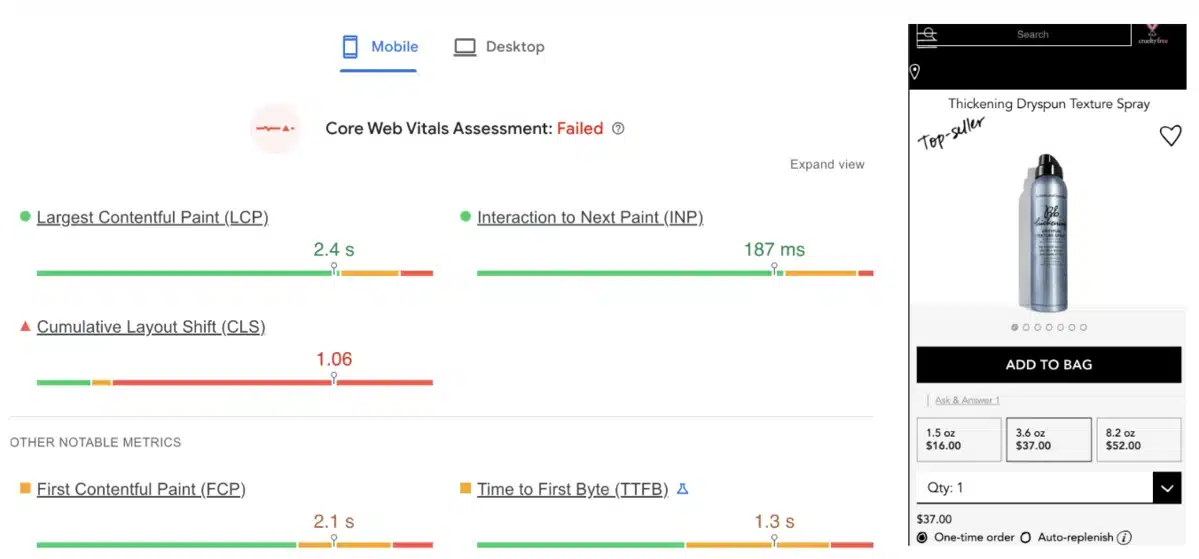
Take a look at the image above. It’s a Google PageSpeed Insights report for one of Bumble and Bumble’s product pages. It shows where Core Web Vitals falls short and highlights the importance of speed optimization for SEO and user experience.
To improve Core Web Vitals, you should compress images, remove unnecessary apps, enable lazy loading, and use a fast-loading theme. Faster load times improve rankings and increase conversions by reducing bounce rates.
2. Optimize for Visual Search
Visual search is growing in importance, with platforms like Google Lens and Pinterest allowing users to search using images instead of text. Shopify stores that optimize image-based searches can capture new traffic sources and enhance user experience.
To optimize for visual search, upload high-quality product images, use descriptive alt text, and ensure images are properly formatted and compressed. Adding structured data (schema markup) for images can also improve discoverability in Google’s image search results.
By focusing on Core Web Vitals and visual search, Shopify stores can enhance UX while improving their SEO rankings.
Internal Linking and Navigation
A well-structured internal linking strategy improves SEO by helping search engines understand the relationships between pages while enhancing user navigation. Proper internal linking distributes link equity, keeping visitors engaged longer and directing them to relevant products, collections, and content.
1. Create Topic Clusters with Internal Links
Topic clusters are an advanced internal linking strategy that improves Shopify SEO by grouping related content around a central topic. Instead of having isolated blog posts or product pages, you create pillar pages (broad topics) that link to supporting content (detailed guides, product pages, or blog posts).
For example, if your Shopify store sells running shoes, a pillar page might be “Ultimate Guide to Choosing Running Shoes,” while supporting pages could include:
- “Best Running Shoes for Beginners”
- “Trail Running vs. Road Running: What You Need to Know”
- “How to Maintain Your Running Shoes”
Each supporting page links back to the pillar page and to each other, forming a topic cluster. This helps Google understand content relationships, boosts rankings, and improves user engagement.
2. Simplify Navigation for Better UX
A simple, intuitive navigation structure improves usability and keeps visitors on your site longer. Your Shopify store should follow a logical hierarchy, making it easy for users to find what they need within three clicks.
Keep menus concise and prioritize high-intent pages like collections, bestsellers, and promotions.
Breadcrumb navigation further enhances usability by showing users their location within your store while helping Google understand page structure.
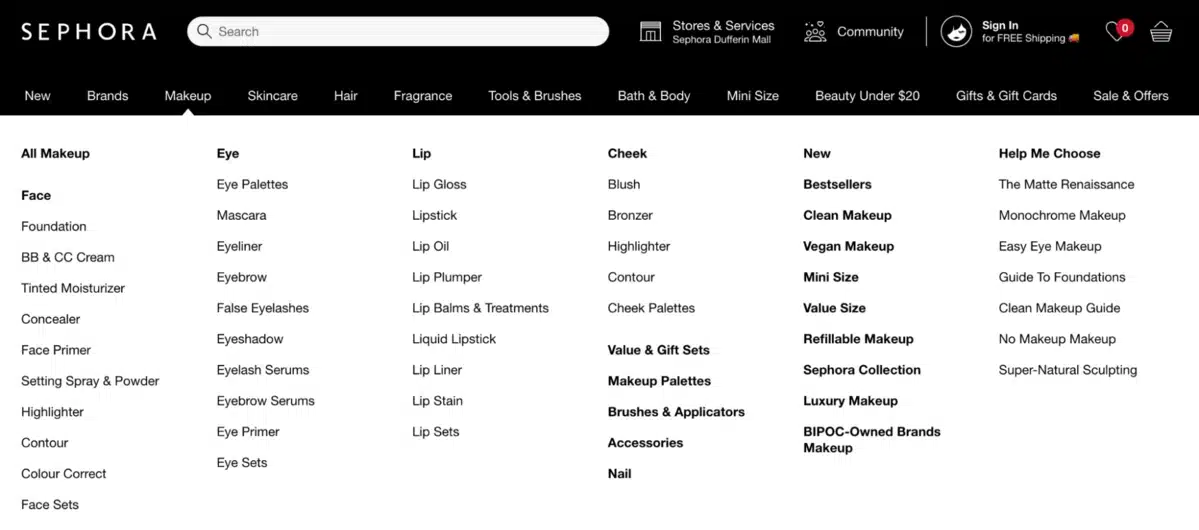
Sephora’s mega-menu is a prime example of intuitive ecommerce navigation—helping customers find products quickly while strengthening SEO through clear, well-structured links.
Implementing a strong internal linking strategy and clear navigation can improve search rankings, user experience, and conversions for Shopify stores.
Leveraging Content for Shopify Ecommerce SEO
Content marketing is a powerful tool for improving organic search visibility and driving high-intent traffic to your Shopify store.
Creating valuable, informative content can attract potential customers, establish authority in your niche, and improve rankings for competitive keywords.
In 2025, successful Shopify stores will leverage blogging, guides, and conversion-focused landing pages to capture and convert visitors at different stages of the buying journey.
1. Maintain a Blog Aligned With Your Business
A well-maintained blog should be part of any ecommerce SEO strategy. It helps your store rank for informational search queries, often from potential customers researching before purchasing.
Instead of relying only on product pages, which typically target transactional keywords, a blog lets you build an audience by capturing top-of-the-funnel traffic and guiding those visitors toward a sale.
To maximize SEO impact and help your articles drive business, Shopify blog posts should be:
- Keyword-optimized: Naturally incorporate target keywords in the title, headings, and throughout the content.
- Comprehensive and useful: Aim for 1,000+ words, covering topics in-depth with actionable insights.
- Interlinked with product pages: Blog posts should lead readers to relevant products, collections, or buying guides.
- Formatted for readability: Use subheadings, killer headlines, bullet points, and images to keep readers engaged.
For example, if you sell skincare products, a blog post titled “How to Build a Skincare Routine for Dry Skin” can educate potential buyers while linking to your store’s moisturizers, serums, and cleansers. This not only improves SEO but also creates a natural path to conversions.
2. Create Conversion-Focused Landing Pages
In addition to blog content, landing pages play a crucial role in Shopify SEO by targeting high-intent search queries and guiding visitors toward purchases.
Unlike standard product pages, conversion-focused landing pages are designed to provide more detailed information, address objections, and drive immediate action.
A strong landing page should include:
- A compelling headline that immediately addresses a customer’s problem or needs.
- Persuasive product descriptions that highlight benefits rather than just features.
- Customer reviews and testimonials to build trust and reduce hesitation.
- Clear CTAs (calls to action) such as “Shop Now” or “Get Yours Today.”
- Fast-loading, mobile-friendly design to keep users engaged.

For example, a Shopify store selling ergonomic office chairs could create a landing page titled “The Best Ergonomic Chairs for Back Pain Relief,” featuring SEO-optimized content, product comparisons, and customer testimonials.
This type of page can rank well for long-tail search queries while converting visitors into buyers more effectively than a basic product page.
Combining blogging and conversion-focused landing pages, Shopify stores can build a strong content ecosystem that attracts, educates, and converts visitors into paying customers.
Building a Strong Backlink Profile
Backlinks remain a key ranking factor, signaling trust and authority to search engines, which is why it should be a big part of your ecommerce off-page strategy.
Quality over quantity is essential—spammy or irrelevant links won’t help. Focus on genuine partnerships, guest posts, and reclaiming unlinked mentions to build a strong, authoritative backlink profile.
1. Prioritize Partnerships and Guest Posting
Building high-quality backlinks is key to boosting your Shopify store’s authority and search rankings.
Focus on strategic partnerships, guest posting, and collaborations to earn valuable links and drive targeted traffic.
To do this:
- Collaborate with relevant brands, influencers, and industry blogs.
- Write high-quality guest posts for trusted websites to earn valuable backlinks.
- Build relationships with complementary Shopify stores for cross-promotions and shared content.
2. Reclaim Unlinked Mentions with AI Tools
Reclaiming unlinked mentions is an easy way to secure valuable backlinks without creating new content. There are a few ways to do this:
- Use Ahrefs, SEMrush, or Google Alerts to find mentions of your brand that lack backlinks.
- Reach out to site owners and request a link to your Shopify store.
- Leverage AI-powered tools to automate brand mention tracking and outreach.
By securing relevant, high-authority backlinks, your Shopify store will improve rankings, increase traffic, and strengthen brand authority by 2025.
Why SEO Matters for Shopify Stores in 2025
As ecommerce becomes more competitive, relying on Shopify’s default SEO settings won’t be enough to stand out. Businesses prioritizing strategic SEO optimizations will see the greatest long-term success, while those neglecting it will struggle to stay visible in search results.
The Evolution of SEO: What’s Changed in 2025?
SEO is constantly evolving, and 2025 brings some of the biggest shifts yet. Google has moved beyond traditional ranking factors like backlinks and keyword density. Instead, it prioritizes:
- User Experience (UX): Faster, more intuitive websites rank higher.
- AI-Powered Search: Google now understands search intent, not just keywords.
- Mobile-First Indexing: You’ll struggle to rank if your Shopify store isn’t mobile-optimized.
- Voice Search Optimization: More shoppers use voice assistants like Siri and Google Assistant to find products.
With these changes, SEO isn’t just about visibility—it’s about providing potential customers with the best possible experience.
How Shopify’s Built-in SEO Features Fall Short
Shopify provides a great starting point for SEO, but it has limitations that store owners must address manually to maximize their rankings. Some common Shopify SEO challenges include:
- Duplicate Content Issues: Shopify auto-generates multiple URLs for product pages, which can confuse search engines.
- Limited Control Over URLs: Shopify forces certain URL structures (e.g., /collections/ and /products/ paths), which aren’t always ideal for SEO.
- Basic Metadata Options: Shopify doesn’t automatically optimize title tags and meta descriptions, which are critical for click-through rates (CTR).
These issues can hurt rankings if left unoptimized, making manual SEO improvements essential for success.
Key Benefits of Optimizing Your Shopify Store for SEO
SEO isn’t just about more traffic—it’s about the right traffic. By attracting visitors already searching for your products, you’ll see higher conversions, lower marketing costs, and long-term growth. Prioritize SEO now, and your Shopify store will thank you later.
Here are the biggest benefits of optimizing your SEO for ecommerce products and Shopify store
1. Increased Organic Visibility and Higher Rankings
The fundamental of D2C ecommerce SEO is the higher your store ranks on Google, the more potential customers will find your products.
Over 75% of searchers never scroll past the first page of Google results, meaning if your Shopify store isn’t ranking in the top 10 results, you’re missing out on valuable traffic.
SEO helps your store appear for high-intent search queries, like:
- “Buy minimalist leather wallet online”
- “Handmade ceramic mugs free shipping”
- “Custom dog collars with name engraving”
These are searches from people actively looking to buy, and SEO ensures they find your store before your competitors.
2. Higher Conversion Rates from Targeted Traffic
Not all traffic is created equal. Visitors who land on your site from organic search are more likely to convert because they search for solutions rather than simply browsing.
For example, a user searching for “buy waterproof hiking backpack” is already in the buying mindset. If your Shopify store ranks for that keyword, you’re meeting them at the perfect moment, increasing the chances of a sale happening instantly.
SEO traffic is more valuable than social media or paid ad traffic because:
- It’s intent-driven (users are actively searching for what you sell).
- It converts better (organic traffic has a higher conversion rate than social media).
- It’s sustainable (you don’t have to keep paying for it like ads).
3. Lower Dependence on Paid Advertising
Many Shopify store owners rely too heavily on paid ads to drive sales. While ads can generate quick traffic, they come with high costs and declining returns.
The moment you stop spending on ads, traffic disappears.
SEO provides ongoing traffic without continuous spending. Once your store ranks well for valuable search terms, you can generate sales without paying for every visitor. This leads to:
- Lower customer acquisition costs (CAC).
- Higher profit margins.
- More predictable revenue growth.
Think of SEO as an investment—you put in the work upfront, and the results compound over time, unlike ads that stop working as soon as you pause them.
4. Stronger Brand Authority and Trust
Ranking high on Google builds credibility.
Consumers trust brands that appear on the first page of search results more than brands they discover through ads.
If your Shopify store consistently ranks for industry-relevant search terms, customers will view you as an authority in your niche. This increased trust leads to:
- Higher click-through rates (CTR).
- More repeat customers.
- More word-of-mouth referrals.
When buyers trust your store, they’re more likely to purchase from you again, improving long-term profitability.
5. Future-Proof Growth Strategy
One of the biggest benefits of ecommerce SEO is that it’s a long-term investment that delivers continuous growth. Unlike ads, which fluctuate in cost and effectiveness, a well-optimized Shopify store will:
- Attract new customers month after month.
- Rank for valuable search terms year after year.
- Continue growing even if ad costs increase.
Businesses that invest in SEO now will future-proof their stores for sustained success.
Frequently Asked Questions
What’s New in Shopify SEO for 2025?
Google’s AI-driven search now prioritizes user intent, structured content, and site performance more than ever. Shopify store owners must focus on fast-loading mobile pages, well-optimized product descriptions, and schema markup to stay competitive. Ranking is no longer just about keywords—it’s about delivering high-value, user-friendly content that matches search intent.
How Can I Use AI for SEO on Shopify?
AI tools can automate keyword research, optimize product descriptions, and enhance content strategy for better rankings. Platforms like ChatGPT, SurferSEO, and Ahrefs help create SEO-friendly content, while AI-driven personalization improves user experience. Leveraging AI for site audits, meta descriptions, and dynamic recommendations can significantly boost visibility.
How Long Does SEO Take to Show Results?
Depending on the competition, domain authority, and content quality, SEO takes three to six months to yield noticeable improvements. Regular updates, backlink building, and AI-powered optimization can accelerate rankings. Unlike paid ads, SEO delivers long-term traffic growth without ongoing costs.
Don’t Leave Your Shopify SEO to Chance. Let Us Optimize it For You.
This Shopify ecommerce SEO checklist should be a good starting point to help you get your store optimized, ranking higher, and pulling in more sales.
After all, a well-optimized Shopify store attracts more organic traffic and improves user experience and conversion rates.
But I also recognize that it’s a lot of work, especially if you’ve already got an entire business to run.
That’s where we come in. We optimize Shopify stores in our sleep and have many happy customers who can testify to the results.
So, if you want to maximize your Shopify store’s SEO potential and leave your store in the hands of seasoned professionals, check out our Shopify SEO Services page.
Learn how we can improve your search visibility today!

